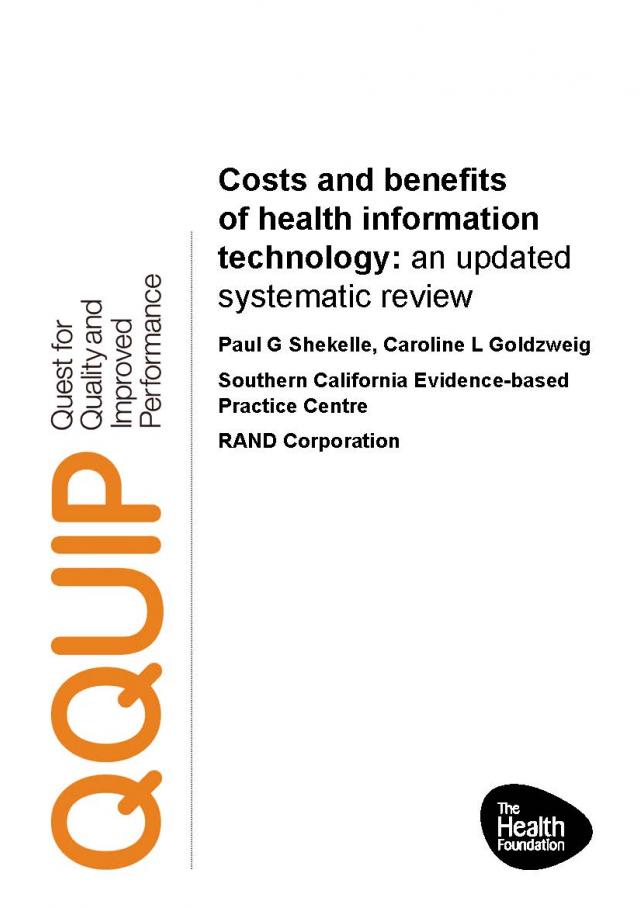Costs and benefits of health technology information An updated systematic review
May 2009

Key points
- Barriers to HIT implementation are still substantial, but some progress has been made on reporting the organisational factors crucial for the adoption of HIT.
- However, there is a challenge to adapt the studies and publications from HIT leaders (early implementers and people using HIT to best effect) to offer lessons beyond their local circumstances.
- There is limited data on the cost-effectiveness of HIT.
This report summarises the available international evidence on the costs and benefits of clinical health information technology (HIT) systems. This study has been undertaken by RAND on behalf of the Health Foundation and updates their 2005 study.
This report aims to gather the lessons learnt on the effects of HIT to costs and benefits that might be of use to organisations looking to develop and implement HIT programmes. This is a difficult exercise considering the multiple factors affecting implementation of an HIT programme. Factors include organisational characteristics, the kinds of changes being put in place and how they are managed, and the type of HIT system.
Work with us
We look for talented and passionate individuals as everyone at the Health Foundation has an important role to play.
View current vacanciesThe Q community
Q is an initiative connecting people with improvement expertise across the UK.
Find out more

